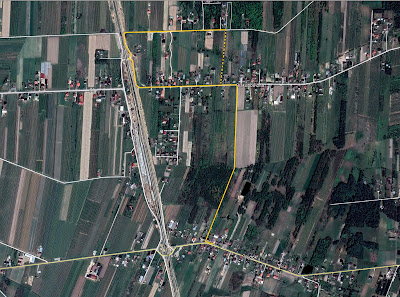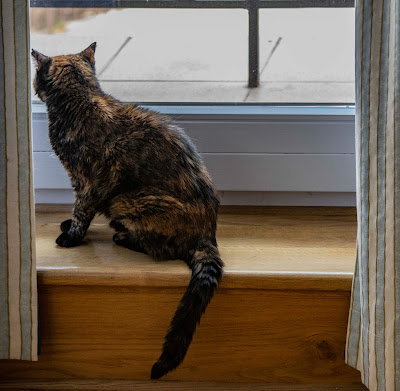"Beat last year" remains the motto when it comes to staving off the onset of old age. I am stronger and healthier than I was last year; last year I was stronger and healthier than the year before that - and I have the data to prove.
Locking my health and lifestyle into my data-obsessiveness has been a great idea; rarely do I miss out on exercises or skip my walking because there's a spreadsheet that needs filling in, the obsession becomes habitualised, and this builds willpower.
The outcome is better samopoczucie - how you feel within yourself, physically and mentally. Within myself, I feel like I felt in my late thirties - and consequently am shocked whenever I catch sight of myself in a mirror - I certainly feel nowhere near as old as I look!
Covid-19 is less likely to be an issue if my immune system is strong; exercise, good diet and sleep all help. But autumn is coming; some mutation might be on the way (Covid-22?) that could sweep away all this positive, life-affirming stuff. That or an accident, or some unsuspected tumour or tick-borne brain disease - we totter continuously on the Edge of Chaos.
Yet there is that strong sense of life, a reason for getting up in the morning, secrets of Life and Universe to be uncovered and shared, an aesthetic, many moments of joy to anticipate in the future - and so health is important, longevity is important, the drive to keep going...
Lockdown has meant fewer paces than last year; my daily weekday walks have been limited to 90 minutes after the end of the working day. My daily average for the first half of this year has been 11,030 paces, compared to 11,804 last year (11,078 in 2018). Weights, pull-ups and planks - I slaughtered last year's numbers. Days when I was too lazy to do any exercises were just five (same in first half of last year). April was the high-point; totally locked down, there was not one day when I didn't complete a full set of ten lots of exercises. Fresh fruit and veg intake was up to 6.4 portions a day from 5.4 portions. Easier to eat well at home than in town, where fast-food tempts.
Press-ups are down on last year - with a good reason. Rather than bash out ever-larger numbers of poor-quality press-ups, I've focused on limiting the number to 30, but making each one perfect - back straight, plank style, then all the way down, chest to the floor, then all the way up until arms lock.
Lockdown has meant fewer paces than last year; my daily weekday walks have been limited to 90 minutes after the end of the working day. My daily average for the first half of this year has been 11,030 paces, compared to 11,804 last year (11,078 in 2018). Weights, pull-ups and planks - I slaughtered last year's numbers. Days when I was too lazy to do any exercises were just five (same in first half of last year). April was the high-point; totally locked down, there was not one day when I didn't complete a full set of ten lots of exercises. Fresh fruit and veg intake was up to 6.4 portions a day from 5.4 portions. Easier to eat well at home than in town, where fast-food tempts.
Press-ups are down on last year - with a good reason. Rather than bash out ever-larger numbers of poor-quality press-ups, I've focused on limiting the number to 30, but making each one perfect - back straight, plank style, then all the way down, chest to the floor, then all the way up until arms lock.
Being on the działka overnight is bad for the numbers, because I don't have weights or a pull-up bar, and the local shops are poor on fresh veg (like no fresh spinach, only the frozen stuff), but I get the paces in.
Alcohol consumption has been reduced further still, another side-effect of lockdown, with average units drunk per week down to 11.5 (first six months of last year it was 13.9 units), with number of days without alcohol increased to 127 - up from 121 in the first half of 2019. Comparing my consumption year-on-year, in the first six months of 2020, I've drunk the equivalent of three half-litre bottles of vodka less than in the same period last year. (Sounds a lot, but it works out at slightly over an airline miniature a week.)
Blood pressure. This time three years ago, my average readings were 140 (systolic) over 100 (diastolic). I was prescribed pills ("to be taken for the rest of my life"). Which I didn't take. On 30 June 2017 my average reading was 134/95. On 30 June 2018 - it was 112/79. On 30 June 2019 it was 110/79. It has crept up over the past 12 months; today it was 116/84. (I take my blood pressure each morning after getting up.)
I can see a clear correlation between going to bed after midnight, which has been the case these past few days, is not a good thing, and diastolic pressure over 80. [Heart Foundation's guidelines are between 90-129 (systolic) and 60-84 (diastolic) as the acceptable norms of healthy blood pressure.] One to watch more obsessively than the others!
This time last year:
First half of 2019 - health in numbers
This time two years ago:
Key Performance Indicators - health - first half 2018
This time three years ago:
Three and half years of health and fitness data
This time four years ago:
First half of 2016 health & fitness in numbers
This time five years ago:
Venus, Jupiter - auspices
This time six years ago:
Down the line from York
This time seven years ago:
Cider - at last available in Poland
This time eight years ago:
Despondency on Puławska
This time nine years ago:
Stalking the stork
This time 11 years ago:
Late June lightning
I can see a clear correlation between going to bed after midnight, which has been the case these past few days, is not a good thing, and diastolic pressure over 80. [Heart Foundation's guidelines are between 90-129 (systolic) and 60-84 (diastolic) as the acceptable norms of healthy blood pressure.] One to watch more obsessively than the others!
This time last year:
First half of 2019 - health in numbers
This time two years ago:
Key Performance Indicators - health - first half 2018
This time three years ago:
Three and half years of health and fitness data
This time four years ago:
First half of 2016 health & fitness in numbers
This time five years ago:
Venus, Jupiter - auspices
This time six years ago:
Down the line from York
This time seven years ago:
Cider - at last available in Poland
This time eight years ago:
Despondency on Puławska
This time nine years ago:
Stalking the stork
This time 11 years ago:
Late June lightning





































